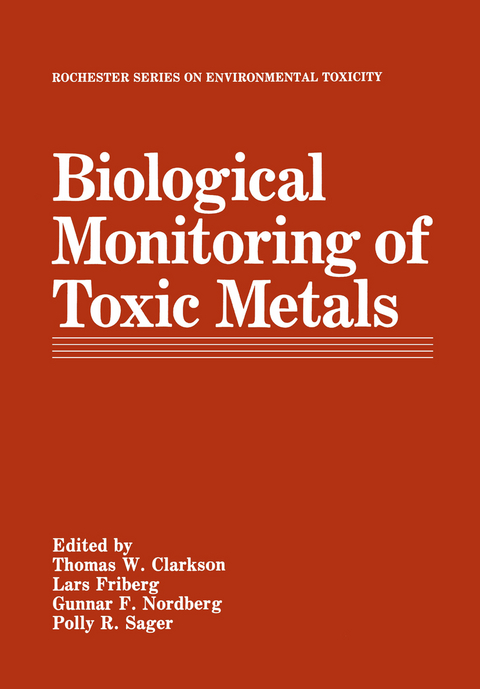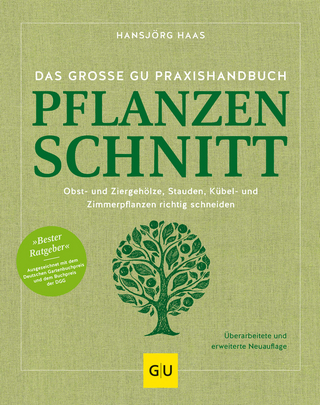
Biological Monitoring of Toxic Metals
Springer-Verlag New York Inc.
978-1-4612-8266-2 (ISBN)
This document is the result of a conference on "Biological Monitoring of Metals" held in Rochester, June 2-6, 1986, organized jointly by the Environmental Health Sciences Center of the School of Medicine and Dentistry of the University of Rochester, NY, and the Scientific Committee on the Toxicology of Metals within the International Commission on Occupational Health (ICOH) at the Karolinska Institute and the National (Swedish) Institute of Environmental Medicine and the University of Umea, Sweden. The aim of the Conference was to define and evaluate the scientific basis for the biological monitoring of metals. The conference was co-sponsored by the World Health Organization through its International Program on Chemical Safety and received substantial encouragement and support from the Swedish Work Environmental Fund and the United States Environmental Protection Agency. This was the second conference organized jointly by the Scientific Committee on the Toxicology of Metals and The Toxicology Division of the University of Rochester. The previous joint conference was held in 1982 on the Reproductive and Developmental Toxicity of Metals. In addition, conferences have been organized by each group (see Appendices A and B). Several of these conferences are specially relevant to the topic of the current conference. These include the joint conference mentioned above and the conferences on dose-effect and dose-response relationship held in Tokyo in 1974 and on accumulation of metals held in Buenos Aires in 1972.
Overview.- Biological Monitoring of Toxic Metals - Overview.- Invited Papers.- Session 1. Introduction.- Biological Monitoring.- The Need and Feasibility of Environmental and Biological Monitoring in Occupational Health.- Quality Assurance.- Overview of Models Used in Biological Monitoring.- Session 2. Specific Metals.- Biological Monitoring of Cadmium.- Biological Monitoring of Exposure to Inorganic Lead.- Mercury.- The Prediction of Intake of Mercury Vapor from Amalgams.- Nickel.- Manganese.- Arsenic.- Biological Monitoring of Aluminum.- Biological Monitoring of Antimony.- Chromium.- Selenium.- Biological Monitoring of Cobalt.- Biological Monitoring of Tin.- Biological Monitoring of Vanadium.- Session 3. Metals Used in Advanced High Technology.- Metals and Semi-Metals in the Semiconductor Device Technologies.- Toxicology of the Group III-V Intermetallic Semiconductor, Gallium Arsenide.- Mechanisms of Indium, Thallium, and Arsine Gas Toxicity: Relationships to Biological Indicators of Cell Injury.- Session 4. Trends in Analytical Methods.- Analytical Methods and Quality Control for Trace Metal Determinations: A Critical Review of the State of the Art.- In Vivo Monitoring of Toxic Metals: Assessment of Neutron Activation and X-Ray Fluorescence Techniques.- Session 5. Biological Media - Their Advantages and Pitfalls When Used in Biological Monitoring.- Biological Monitoring of Urine for Exposure to Toxic Metals.- Histological and Urinalysis Assessment of Nephrotoxicity Induced by Mercuric Chloride in Normal and Uninepnrectomized Rats.- The Use of Blood in the Biological Monitoring of Toxic Metals.- Biological Monitoring of the Human Placenta.- The Toxicological Importance of Lead in Bone: The Evolution and Potential Uses of Bone Lead Measurements by X-Ray Fluorescence toEvaluate Treatment Outcomes in Moderately Lead Toxic Children.- Hair and Nails: Advantages and Pitfalls When Used in Biological Monitoring.- Biological Media - Their Advantages and Pitfalls When Used in Biological Monitoring - Feces.- Practical Problems of Collecting Samples of Biological Media in Developing Countries.- Appendix A.- Appendix B.- Appendix C.- Appendix D.- Author Index.
| Reihe/Serie | Rochester Series on Environmental Toxicity |
|---|---|
| Zusatzinfo | 698 p. |
| Verlagsort | New York, NY |
| Sprache | englisch |
| Maße | 170 x 244 mm |
| Themenwelt | Sachbuch/Ratgeber ► Natur / Technik ► Garten |
| Medizin / Pharmazie ► Medizinische Fachgebiete ► Pharmakologie / Pharmakotherapie | |
| Medizin / Pharmazie ► Pharmazie | |
| Naturwissenschaften ► Biologie ► Ökologie / Naturschutz | |
| Technik ► Umwelttechnik / Biotechnologie | |
| ISBN-10 | 1-4612-8266-7 / 1461282667 |
| ISBN-13 | 978-1-4612-8266-2 / 9781461282662 |
| Zustand | Neuware |
| Haben Sie eine Frage zum Produkt? |
aus dem Bereich


